Acura
| Acura | |
 | |
| Üretildiği ülke: | ABD |
|---|---|
| Kurucusu: | Honda |
Acura, Japon otomobil üreticisi Honda’nın 1986 yılından bu yana sadece ABD, Kanada ve Hong Kong için üretilen lüks otomobiller için kullandığı bir markadır. Acura markası, Meksika’da ilk kez 2004 yılında tanıtılırken Çin pazarında ise 2006 yılında tanıtılmaya başlanmıştır. Honda firması, Acura markası ile Japonya dışında üretilen lüks otomobil pazarında ilk sıraya yerleşti.
Yaklaşık 10 yıl süren araştırma geliştirme çalışmaları sonucunda, 1986 yılında Honda Motor Şirketi Acura otomobil modellerini tanıtmak ve pazarlamak amacıyla Kuzey Amerika’da 18 temsilci açtı. Acura markası bu ülkedeki “ilk Japon lüks otomobil” olarak tarihe geçti. Amerika pazarına sunulan ilk modeller: Legend, V6-Güçlendirilmiş Coupe, Sedan ve Integra. Bu modellerin başarısı ile birlikte lüks Japon otomobil modelleri (Toyota'nın Lexus ve Nissan'ın Infiniti) arasında bir rekabet başlamış oldu.
Konu başlıkları[gizle]
|
Acura modellerinin tarihi gelişimi [değiştir]
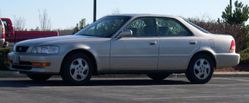
1986 yılında Legend, V6-Güçlendirilmiş Coupe, Sedan ve Integra modelleri ile Amerikan lüks otomobil pazarına giriş yapan Honda firması, 1991 yılında Legend modeli ile “En iyi ithal otomobil” ödülünü aldı. Bu ödülün ardından araştırma geliştirme çalışmalarına hız veren Honda devrim niteliğindeki VTEC teknolojisi ile üretilmiş yeni NSX modelini tanıttı. 1997 yılında Integra Type-R modeli tanıtıldı. 2001 yılında pazara sunulan MDX modeli aynı yıl içinde “En iyi spor otomobil” ödülünü aldı. 2002 yılında Honda tarafından yapılan bir açıklama ile Kuzey Amerika’daki Integra modelinin ismi RSX olarak değiştirildi. 2003 yılında CL Coupe ve Acura Integra Sedan modellerinin yerini (BMW 3 serisi modelleriyle rekabet edebilmek için) daha gelişmiş bir model olan TSX aldı. Artan rekabet ve talepler doğrultusunda 2004 yılında Acura modelleri Meksika pazarına tanıtıldı. Aynı yıl içinde piyasaya sürülen 3. jenerasyon Acura TL modeli Amerika’da en çok satan lüks otomobil oldu. 2005 yılında Acura TL modeli, Edmunds.com tarafından “En beğenilen araç” seçildi. Aynı yılın sonlarında SH-AWD teknolojisiyle üretilen Acura RL satışa sunuldu. Uzun süren pazarlama stratejileri sonunda 2006 yılında Honda, Çin pazarına tanıtıldı. Japonya iç pazarından gelen talepleri değerlendiren Honda firması Acura modellerinin 2008 yılında iç pazarda da satışa sunacağını açıkladı.
Acura modelleri
- Acura MDX
- Acura RDX
- Acura RL
- Acura TL
- Acura TSX
- Acura CSX
- Acura RSX
Üretilmesi düşünülen yeni tarz modeller
- Acura “Advanced Sedan Tarzı“
- Acura “Advanced Sport Tarzı“ (Yeni Jenerasyon NSX)
Kalıcı Bağlantı Yorum (0) Yorum yaz!
AC Cars İle İlgili
AC Cars

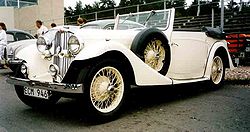
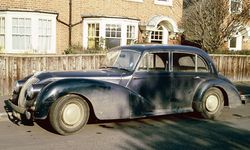



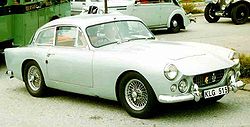

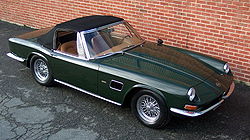

AC Cars Group Ltd. formerly known as Auto Carriers Ltd. is a British specialist automobile manufacturer and one of the oldest independent car marques founded in Britain. The most recent manufacturing location of AC is Hal Far, Malta but this has now closed.
Contents[hide]
|
[edit] History
The first automobile from what would eventually become AC was presented at the Crystal Palace motor show in 1903; it was a 20HP touring car and was displayed under the Weller name. The Weller Brothers of West Norwood, London, planned to produce an advanced 20 hp car. However, Portwine (their financial backer) thought the car would be too expensive to produce and encouraged Weller to design and produce a little delivery three wheeler. Weller did so, called it the Auto-Carrier, and a new company was founded and named Autocars and Accessories; production started in 1904. The vehicle caught on quickly and was a financial success. In 1907 a passenger version appeared, called the A.C. Sociable. It had a seat in place of the cargo box.
The company became Auto Carriers Ltd in 1911 and moved to Ferry Works, Thames Ditton, Surrey - at this time they also began using the famed "AC" roundel logo. Their first four-wheeled car was produced in 1913; it was a sporty little two seater with a gearbox on the rear axle. Only a few were built before production was interrupted by the first World War.
During the Great War, the Ferry Works factory produced shells and fuses for the war effort, although at least one vehicle was designed and built for the War Office. At the end of the First World War, AC Cars started making motor vehicles again, designing and building many successful cars at Ferry Works, as well as expanding into an old balloon factory on Thames Ditton High Street.
After the war, John Weller started on the design of a new overhead cam 6 cylinder engine. The first versions of this design were running by 1919. The Weller motor would be produced through 1963; it is possibly the second-longest-lived production motor in history after the Volkswagen boxer.
In 1921, Selwyn Edge (who had been with Napier & Son) bought shares of the company and was appointed governing director. He did not get along with Weller or Portwine, who resigned less than a year later. In 1922, the name changed again to AC Cars Ltd. Edge bought the company outright for £135,000 in 1927 and re-registered it as AC (Acedes) Ltd but sales, which had been falling, continued to decline. The company was caught by the crash of 1929 and went into voluntary liquidation. Production ceased for a time, and the company was sold to the Hurlock family who ran a successful haulage business. They wanted the High Street factory only as a warehouse (Ferry Works was not acquired), but allowed the service side of AC to continue.
A single car was made for William Hurlock in 1930. He liked it and agreed to restart very limited production, mainly using components left over from previous models. An agreement was reached with Standard to supply new chassis, the ancient three speed transaxle was replaced by a modern four speed gearbox (built in unit with the engine), and by 1932 a new range of cars was finally launched. Production continued on this small scale, averaging less than 100 vehicles per year, until the outbreak of the Second World War in 1939. The final pre-war car was delivered in June 1940, after which the factory was fully involved with war production.
[edit] Post World War II
Production of cars restarted in 1947 with the 2-Litre and with a large contract with the government to make fiberglass-bodied single seat invalid carriages with BSA engines. The 2-Litre used an updated version of the pre-war underslung chassis fitted with the AC straight-six and traditional ash-framed and aluminium-panelled saloon or convertible coachwork. The invalid carriages continued to be built until 1976 and were an important source of revenue to the company. They also built an aluminum-bodied three-wheeled microcar, the Petite.
In 1953 the firm began production of the AC Ace, a lightweight chassis designed by John Tojeiro with the venerable Weller-designed 2-Litre engine. Soon after, car dealer and racing driver Ken Rudd fitted his own competition Ace with a pre-war BMW-designed, Bristol-produced 135 bhp (101 kW) six-cylinder engine. This combination was put into production as the AC Ace-Bristol in 1957. In this form, the car raced at Le Mans in 1957 and 1958.
In 1961, Bristol stopped producing their own engines - and once again, Ken Rudd came to the rescue, suggesting that AC use a 6 cylinder engine from the Ford Zephyr. These engines when fitted with the Raymond Mays twelve-port alloy head and Weber carburetors could be made to produce a safe 170 bhp (127 kW) and a 125 mph (201 km/h) top speed. The AC Ace 2.6 (as it is latterly known today) is for many people the prettiest Ace of all - and undoubtedly the rarest, with only 37 such cars built. To fit the Zephyr engine, AC had to modify the frame, relocate the steering box and completely change the nose of the car. These changes are often mistakenly attributed to Carroll Shelby.
For 1954, a new aluminum-bodied closed coupe was unveiled at Earls Court, the AC Aceca. It was only slightly heavier than the convertible Ace, and because of better aerodynamics was actually slightly faster (128 mph top speed). Only 328 Acecas were produced, and they were equipped with either of the Ace's engines. There was a demand from some customers for a larger four-seater car, for whom AC produced the Greyhound. This was built on a stretched Ace chassis with coil suspension all around and a 2.2-litre Bristol engine.
Today, Acecas are popular at historic racing events. Arch McNeill, a factory Morgan racer from the 1940s, 1950s and 1960s told fellow Texan and Aceca owner Glenn Barnett that "the Morgan team spent two years campaigning to beat the factory AC Acecas and finally did in the late 1950s." Though more valuable than comparable AC or Shelby replicas, the Aceca is still a bargain when compared to a Shelby CSX Cobra, while maintaining similar performance.
The company also ventured briefly into railway rolling stock business, building five four-wheel railbuses for British Rail in 1958.
[edit] Carroll Shelby and the Cobra
In 1962 AC was approached by Carroll Shelby to use a small block Ford V8 engine in the Ace chassis, producing the AC Cobra. Shelby needed a car that could compete with the Chevrolet Corvette in US sports car racing. The resulting Cobra was a very powerful roadster, and it is commonly blamed for the introduction of the 70 mph (113 km/h) limit on British motorways. While this was a major factor in the decision, after a coupe version was caught doing 196 mph (315 km/h) during a test run[1], a then-recent spate of accidents under foggy conditions also helped the introduction of the limit.[2]
At the end of the 1964 racing season, the Cobra was being outclassed in sports car racing by Ferrari. Carroll Shelby decided he needed a bigger engine. A big block Ford FE series 390 V8 was installed in a Cobra and the result was scary - the car was virtually undrivable. It was decided that a completely new chassis was needed. With the combined help of Ford’s computers and the experience of the AC engineers, the new MKIII was born with 4-inch (100mm) main tubes instead of 3-inch (75mm) for the chassis, huge cross-braced shock towers and coil springs all around. This, along with a bigger 427ci version of the FE, made the new AC Cobra MKIII an absolutely unbeatable 2,200 lb race car. Specifically, the engine that was installed in the car was Ford's famed 427 FE NASCAR "Side-Oiler" V8, a power-house engine developing 385 bhp in its mildest street version. Unfortunately, the car missed homologation for the 1965 season and was not raced by the Shelby team. However, it was raced successfully by many privateers and went on to win races all the way into the 1970s. The AC 427 Cobra, although a commercial failure when in production, has now become one of the most sought-after and replicated automobiles ever.
It was produced in two versions, a street model with a tamer motor, optional dual carburetors, a glove box and exhaust running under the car and a competition version with a stripped interior, no glove box, different instrument layout and revised suspension. The competition version also had a more powerful motor with only one carburetor, side exhausts, a roll bar and wider fenders to accommodate racing tires. At the end in 1966, Shelby was left with 31 unsold competition cars; he decided to sell them to the general public under the name of Cobra 427 S/C or Super Competition. Today these S/C cars are the most sought after models and can sell in excess of 1.5 million dollars.
Carroll Shelby sold the Cobra name to Ford in 1965 and went on to develop the famed racing Ford GT40.
Meanwhile, AC went on producing a milder version of the 427 MK III Cobra for the European market fitted with the small block Ford motor. The car was called the AC 289 and 27 were produced.
[edit] AC 428 or Frua and AC 429
At the same time, the company realized they needed a grand tourer model that could appeal to wealthy customers. AC contacted the famed Italian coach builder Pietro Frua to design an appealing GT body that could be fitted on a MKIII Cobra chassis stretched by 6 inches (150 mm). The new car was shown at the 1965 Turin show. A few early models were fitted with the famed 427 Ford FE motors. In 1967 the long-stroked 428 motor became available and the car was known as the AC Frua. Built out of steel rather than AC's usual aluminum, the Frua is heavier than a Cobra at slightly under 3,000 lb. That said, it is still a light and very fast automobile built on a racing chassis. The car was never fully developed and the cost of sending chassis from England to Italy and back for final assembly made it so expensive that only a few were produced. Production ended in 1973 after only 80 cars (29 convertibles and 51 coupes) were finished.
In 1970, a special version of the coupé was built. It was based on an extended bodyshell that Frua built for Monteverdi which was supposed to become the second Monteverdi 375/L. After the alliance of Monteverdi and Frua split off in Summer 1969, that bodyshell remained in the Frua works in Torino. A year or so later Frua changed some details on front and rear, including some semi-hidden headlamps which had been seen on the Iso Lele and the Iso Grifo, second series, before. The car was called AC 429; it remained a one-off. It still exists.[citation needed]
[edit] 3000ME
The 1970s were not a good period for luxury car manufacturers and Derek Hurlock went searching for a totally new smaller car. Mid-engined designs were in fashion at the time and in 1972 the Diablo, a prototype with an Austin Maxi engine and transaxle was built by privateers Peter Bohanna and Robin Stables. In much the same way as they had taken up the Tojeiro prototype and turned it into the Ace, AC acquired the rights and at the 1973 London Motor Show showed their own version, the mid-engined ME3000 with the 3.0-litre Ford Essex V6 engine installed transversely over a bespoke AC-designed gearbox. Development was virtually complete in 1976 when new Type Approval regulations were introduced. A prototype failed the 30mph crash test, and the chassis had to be redesigned. On the second attempt, the car passed with flying colours. This was a huge achievement for a tiny firm - Vauxhall had to make several attempts before the contemporary Chevette passed. For AC, such delays meant that the first production cars (now renamed 3000ME) were not delivered until 1979, by which time they were in direct competition with the Lotus Esprit. Although comfortable, brisk, nicely built and practical, AC's ambitions of selling 250 cars per year were a distant memory. After just 71 cars were sold, Hurlock called a halt to production as his health was suffering and the company was struggling in the teeth of a recession. In 1984 production stopped at Thames Ditton and the car and the AC name were licenced to a new company registered as AC (Scotland) plc run by David McDonald in a new factory in Hillington, Glasgow. Here, 30 cars were built, including a development car tested with Alfa Romeo's 2.5-litre V6 engine and a nearly-complete Mark 2 prototype of the same. Regardless (or possibly because) of these developments, AC Scotland called in the receivers in 1985. After selling the historic High Street works for redevelopment, AC themselves soldiered on as a service operation in the '21st Century' works on Summer Road until the Hurlock family finally sold their holdings in 1986 to William West. After some complex machinations the company was split between property interests and the car brand; the former was renamed and the latter was acquired by Brian Angliss.
[edit] Brian Angliss era
In 1982 Brian Angliss was running Autokraft, a Cobra restoration shop, parts supplier and replica manufacturer. To further such pursuits, he acquired some of the tooling from Thames Ditton and created the MKIV; the car had US-spec 5 mph bumpers, a federalized motor, and a larger interior with modern switchgear. About 480 cars were produced in his factory at Brooklands. He also produced a lightweight model which was more in tune with the original Cobra spirit, though it could not be imported to the US due to Federal regulations.
Early cars were sold as the Autokraft MKIV but eventually Angliss acquired the rights to use the AC name. Derek Hurlock had been strongly protective of the name, but Angliss' high standards of craftsmanship won him over. Brian Angliss was a man of vision and really tried to revive AC Cars. When the Hurlock family finally sold up in 1986 he fully acquired the AC trademark rights and set up a new AC company as a joint venture with Ford, who had also recently bought Aston Martin. A big conflict followed over the future direction for AC, but Angliss eventually won his independence as well as Ford's continuing and essential cooperation as an engine and parts supplier.
Also interested in aircraft, Angliss restored a Hawker Hurricane XIIB at Brooklands as well as acquiring two ex-Indian Air Force Hawker Tempest IIs as future projects. The Hurricane was registered as G-HURR and was sadly destroyed in a fatal accident at the Shoreham air show in 2007.
Angliss had foresight and was looking for a new car to complement and perhaps replace the MKIV. At the 1993 London Motor Show, he introduced a new vehicle that he named the AC Ace. It was a nice automobile with a stainless steel chassis and an aluminum body, but was expensive to develop and build. The costs hit Angliss hard and he sold his large motor bike collection, vintage Bentley and other assets to try to make ends meet. Sadly the receivers were called in by 1996 after approximately 50 "new" Aces had been built.
[edit] Ownership confusion/Attempt to revive AC
In March 1996, largely due to the cost of developing the new Ace, Angliss' company went into receivership and was eventually sold to Alan Lubinsky’s Pride Automotive in December 1996, who continued car production in Weybridge, Surrey under the name of AC Car Group Ltd. Lubinsky transferred AC trademarks and intellectual property to a Delaware, USA holding company, Acedes Holdings LLC, at some point.[3] Both the Cobra Mk IV and the Ace were made, and soon a 'CRS' version of the Mk IV was announced with a carbon fibre body shell as well as the Superblower with a supercharged Ford V8. Two or three closed Aceca coupe versions of the Ace were also made. However, the company soon fell into receivership again, and was saved by Jimmy Price, who owns Superformance in the US and South Africa. After a bitter fight, Jimmy Price walked away and left Lubinsky in control again.
In 2003, Carroll Shelby International and AC Motor Holdings, Ltd. announced production of authentic Shelby/AC Cobra, with the production vehicle arriving at dealers in July 2004. Initially, available models included Shelby AC 427 S/C Cobra and Shelby AC 289 FIA Cobra, which would be branded as the CSX 1000 and CSX 7500 Series, respectively. In February 2004 the first handcrafted aluminum body shell was built. However, AC Motor Holdings, Ltd. failed to perform under the terms of its license agreement with Carroll Shelby, and a lawsuit was filed by Shelby against AC Motor Holdings, Ltd. and its proprietor, Alan Lubinsky, in May 2006.
In 2005, AC relocated to Malta and started production of the carbon-fibre bodied AC MkV. According to the Malta Star newspaper dated March 19th 2008, Lubinsky has fled the country without paying his suppliers or the Maltese government.[4]
Lubinsky has confirmed the factory's closure and that production is planned to return to the UK, but claims the closure is amid legal action instigated by AC Cars in 2007 against Malta Enterprise for breach of contract over the condition of the factory when AC Cars took custody, and that the Malta Star's report contains false statements.[5][6] Steve Gray, owner of AC Heritage and the Brooklands Motor Company (the spiritual successor of Autokraft) in Weybridge, Surrey, UK confirmed plans for the continuation of the traditional AC designed tubular chassis and aluminium bodied models.[7] It is also planned to start production in the USA by the newly formed AC AutoKraft LLC in Michigan.[8]
[edit] Car Models
| Type | Engine | Approx Production | Year | Notes |
|---|---|---|---|---|
| Autocarrier | 648 cc single cylinder air cooled | 1904-1914 | Three wheeler goods carrier with single wheel at rear and driver behind the load. Chain drive to rear wheel via 2 speed epicyclic gearbox. | |
| AC Sociable | 648 cc single cylinder air cooled | Possibly 1800 | 1907-1914 | Passenger version of the Auto Carrier from 1907 with driver and passenger side by side (2 seater) or driver behind (3 seater). |
| AC Ten | 1096 cc four cylinder water cooled | About 100 | 1913-1916 | Engine made by Fivet of France. Transmission by Transaxle (combined rear axle and gearbox). Two seater and dickey or Sports two seater. Optional 1327 cc engine pre war, standard post war. |
| AC 12 hp | 1478/1992 cc four cylinder water cooled | Approx 850 including 6 cylinder models to 1929 | 1920-1927 | Engine made by Anzani or later Cubitt. Transmission by 3 speed transaxle. Two or four seater bodies. |
| AC Six (16/40, 16/56 and 16/66) | 1478/1991 cc six cylinder water cooled | Approx 850 including 12 hp models to 1929 plus 50 assembled from parts 1930 - 33. | 1920-1929 | Engine made by A.C. Larger capacity from 1922. 16/66 had triple SU carburetors. Transmission by 3 speed transaxle. Two or four seater bodies. |
| AC Six (16/60, 16/70, 16/80 and 16/90) | 1991 cc six cylinder water cooled | 618 1932 to 1940 | 1932-1940 | Engine made by AC; 16/90 was supercharged with an Arnott blower. Transmission by 4 speed ENV, Moss synchromesh or Wilson pre-selector gearbox. Longer and wider than previous Six. Chassis overslung 1932-33, underslung 1933-1939, overslung 1939-1940. |
| AC 2-Litre | 1991 cc six cylinder water cooled | 1284 [9] | 1947-1958 | Engine made by A.C. Two and four door saloons, drophead coupé and tourer bodies. |
| AC Petite | 350 cc single cylinder two stroke | Approx 4000[9] | 1952-1958 | Engine made by Villiers. Four speed gearbox. Three wheeler with single front wheel. Two/three seater. |
| AC Ace | 1991/1971 cc six cylinder water cooled | 689 | 1953-1963 | Engine made by AC or Bristol (1971 cc) from 1956 or Ford Zephyr engine (Later models). Two seat aluminium open sports bodies. |
| AC Aceca | 1991/1971/2553 cc six cylinder water cooled | 357 | 1954-1963 | Engine made by AC or Bristol (1971 cc) from 1956 or Ford (2553 cc) from 1961. Front disc brakes from 1957. Two seat aluminium sports coupé bodies with hatchback. |
| AC Greyhound | 1971/2216/2553 cc six cylinder water cooled | 83[9] | 1959-1963 | Engine from Bristol. De Dion rear suspension, (Some might have the AC Independent suspension). 2 plus 2 coupe bodies. |
| AC Cobra 260/289/AC289 | 4261/4727 cc V8. | 75/571/27 | 1962-1968 | Legendary two seat aluminum roadster. Ford small block V8 Engine. Four wheel disk brakes. Early MK1 cars had cam and peg steering, later MK2 cars rack and pinion. Later AC 289 had AC 427 MK3 coil spring chassis & body with narrow fenders. |
| AC Cobra 427/428 | 6997/4948 cc V8. | 306 to 1966 | 1964-1966 1983-1990 | MK3 series. A reworked AC Cobra designed for racing with coil springs all around and beefed up 4" chassis tubes. Early cars had Ford FE 427 Engines, later cars fitted with less expensive 428 FE motors. Around 400 bhp (298 kW) or more depending on version, Four wheel disc brakes and rack and pinion steering. Aluminum bodied two seat roadster bodies. |
| AC Frua | 6997/7016 cc V8. | 81 | 1965-1973 | Frua body built on a 6 inch (150 mm)stretched Cobra 427 Chassis Ford FE 428 400 bhp (298 kW) engine. 4 wheel disc brakes. Manual or automatic transmission. Two seat open or coupé, steel body built in Italy. |
| AC 3000ME | 2994 cc V6 Ford 'Essex' | 101 full production cars | 1979-1985 | Transverse mid-engined with five speed AC gearbox. Platform chassis with front and rear subframes, GRP body. |
| AC Ace | 4601/4942 cc V8. | 1996- | Engine made by Ford. 4942 cc version supercharged. | |
| AC Aceca | 4601/4942 cc V8. | 1998- | Engine made by Ford. 4942 cc version supercharged. Four seat coupé version of the Ace. Chassis made in South Africa, bodies in Coventry. |
[edit] External links

- AC Cars Limited official website
- AC Cars at the Open Directory Project
- AC cars on 3-wheelers.com
- AC Cobra and other replica cars
- AC Owners' Club
- [1]
Ford Haberleri
|
Tidak ada komentar:
Posting Komentar